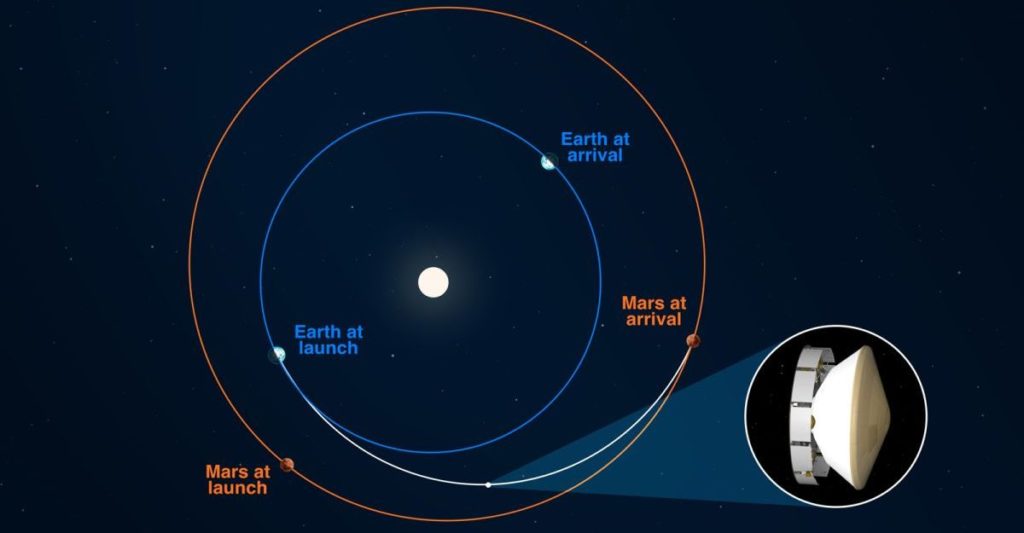Sky Report: February 8 – February 14

Mars remains the sole planet visible tonight, and you can easily see it high in the southwest as darkness falls. It remains visible until it sets after midnight. Mars is brighter – and oranger – than any star in the area so you’ll have no trouble identifying it.
Three spacecraft reach Mars this month, an orbiter from the United Arab Emirates (Feb. 9), a combination orbiter-lander-rover from China (Feb. 10), and the Perseverance Rover from the USA (Feb. 18). All three were launched last July – so why launch then, and why arrive now?
It’s because even at the speed that interplanetary spacecraft travel – 40,000 mph or 19 miles per second – it takes 6-7 months to arrive. You have to lead your target, like a duck hunter, and aim ahead. Mars was closest to earth last October, so the idea is to split the difference; launch your spacecraft so it’s half-way there when your target is closest; then the total distance traveled is minimized. (Mars is presently 124 million miles distant, three times as far as in October.)
Our Perseverance rover, by the way, carries the first interplanetary drone.
Last week I mentioned that there are three bright red (actually orange) stars that rival Mars in color. Two aren’t too distant from it. Aldebaran and Betelgeuse are in the “winter” sky and they’re out this evening, while the third, Antares, is in the “summer” sky and you can see it in the southeast shortly before sunrise. Although it’s definitely winter now, the stars of the spring sky rise late in the evening and the stars of the summer sky rise before dawn. Stars of the “season” sky refer to the stars you see in the evening that “season”.
There’s a nice conjunction of Jupiter and Venus on the morning of the 11th, but you won’t see it. That’s a shame – the two brightest planets are less than half a degree apart, which is the diameter of the moon, but they’re only 5° above the horizon at the moment of sunrise. Often conjunctions happen when the planets are too close to the sun to be observed. People with computer-controlled telescopes might look for them later that morning in daylight. The moon is new on the 11th. You’ll see it return to the evening sky as a crescent beginning two days later, when it’s low in the west during evening twilight.
Image Credit: NASA/JPL – Caltech
The Sky Report is presented as a public service by the Stellar Vista Observatory, a nonprofit organization based in Kanab, Utah, which provides opportunities for people to observe, appreciate, and comprehend our starry night sky. Additional information is at www.stellarvistaobservatory.org. Send questions and comments to
John@StargazingAdventures.org.






Comments are closed.